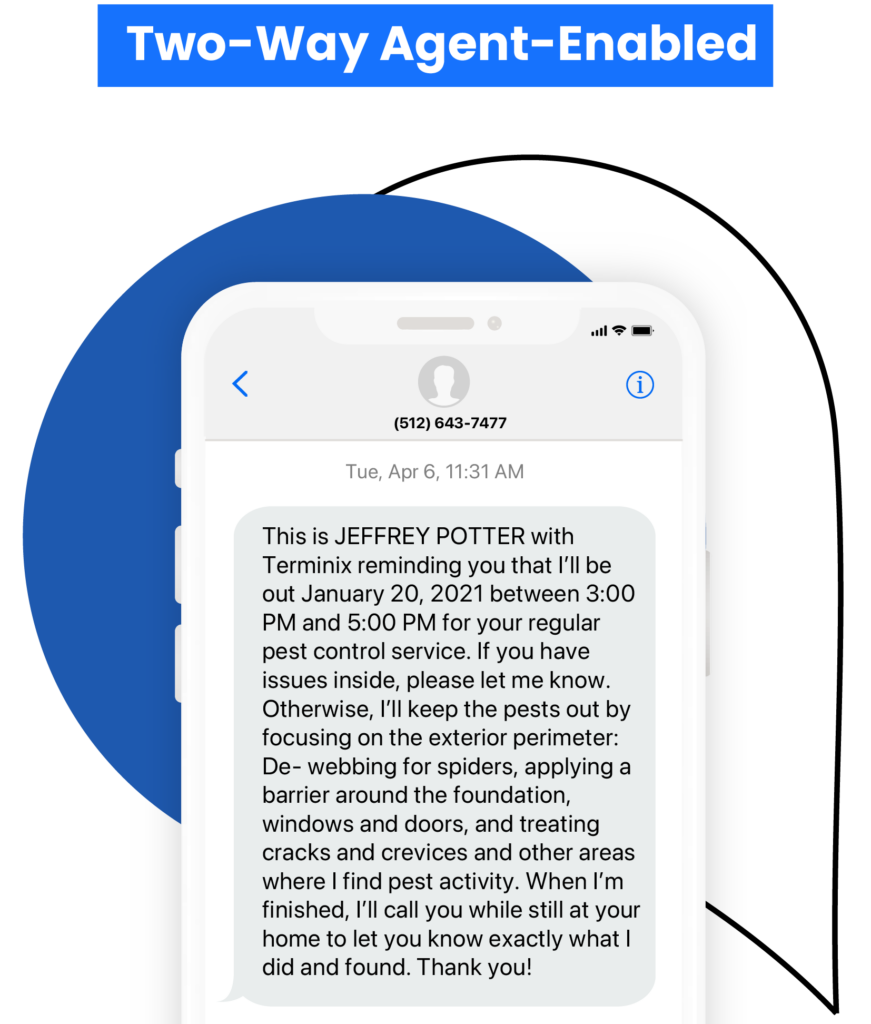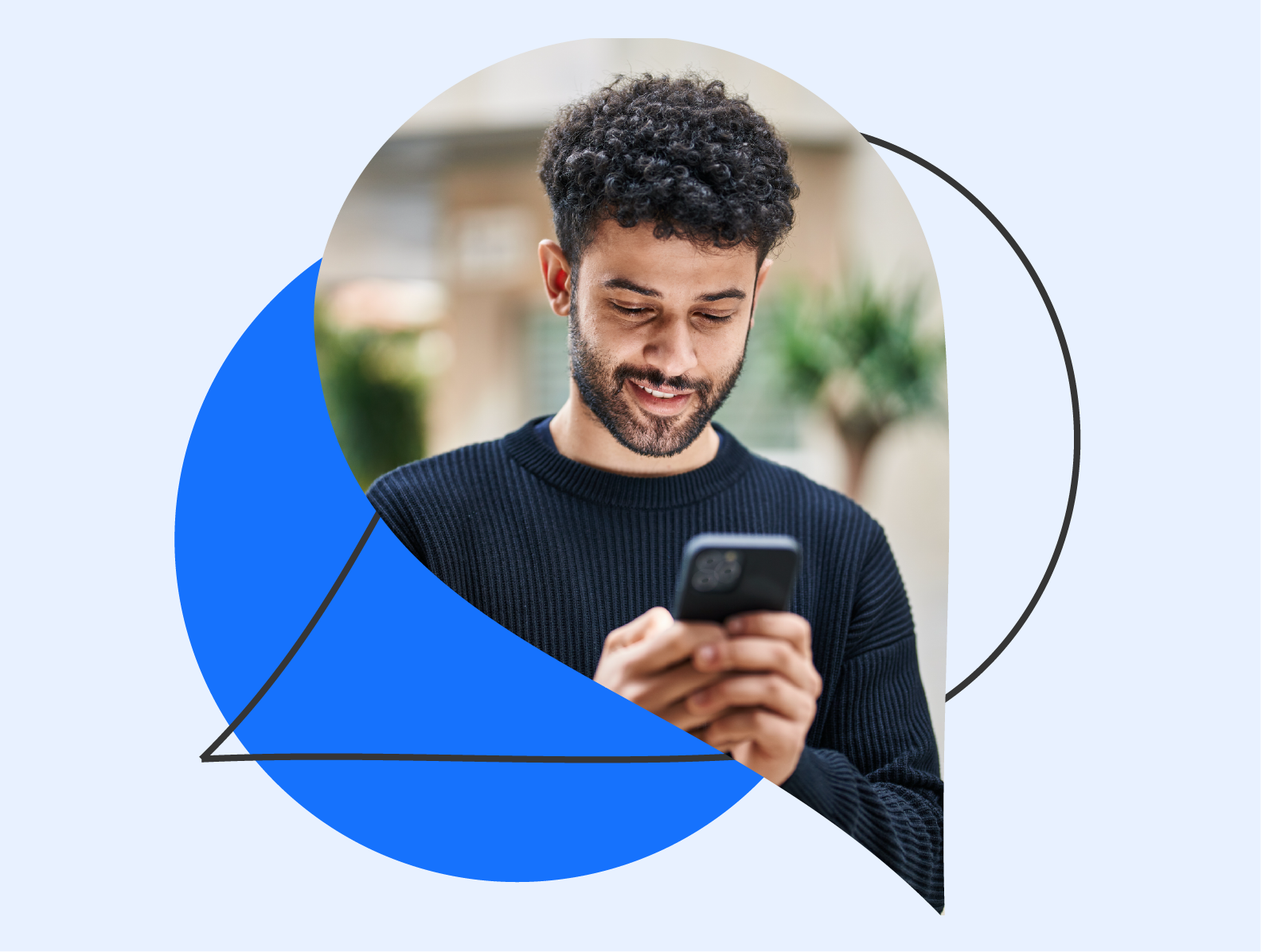The Five Different Types Of Texting
With all the different kinds of texting available, what does your SMS strategy look like? Do you send a bunch of one-off text messages? Perhaps you prefer a two-way approach that involves hiring extra staff to help with the volume. Maybe you’re even on the tech-savvy side of things with a chatbot or want to offer human-like conversation using AI. No matter if your enterprise has an existing channel or if you’re just starting to look for one, it's important to understand that each type of business texting will result in a different audience interaction.
Not All SMS Is Created Equal
From just the examples mentioned above, it is evident that there are many options to explore in the world of Short Message Service (SMS) outreach. The key to devising an effective SMS strategy lies in understanding how these various methods can be tailored to engage your target audience effectively.
Mobile phones have become ubiquitous, so harnessing the power of SMS messages is crucial (along with related mobile messaging technologies like MMS). The major text message outreach strategies are:
- Blast Messaging
- Short Code
- Chatbot
- Two-Way Agent-Enabled
- Conversational Outbound

Blast Messaging
SMS blasts (also known as push messaging) are one-way in nature and usually involve sending mass marketing messages to your audience. These often include special deals and sales events, or reminders of key dates or features. When compared to email blasts, blast text messaging enjoys a very high reach — with estimates as high as 99% (RedEye).
Best For: Sending a one–time, one-way message to a segment of your audience.
Advantages:
- Generally easy to DIY
- Direct contact with your audience
- Keeps your enterprise and brand in front of your audience
Challenges:
- Expensive (depending on your audience)
- Hard to incorporate into your funnel
- Minimal personalization
- Not scalable, requires a lot of human maintenance
- High probability of throughput issues at scale
- Frequent blasts may cause unsubscribes

Short Code
Short code texts are one-way SMS messages used to provide alerts, information on specials, or promotional codes. Like SMS blasts, short code is another type of one-way push messaging.
“Short code” refers to the fact that this strategy uses shorter five- or six-digit phone numbers, rather than the more familiar 10-digit numbers. These short codes must be leased by enterprises and grant the advantage of higher message throughput of about 100 messages per second (Drip).
Short code texts are usually a few lines long with no interaction between the audience and the brand.
Best For: Shopping cart re-engagement, coupon code delivery, news updates from brands, or alerts and notifications that require no interaction (e.g., flight status and gate changes for an airline.)
Advantages:
- Direct contact with your audience
- Keeps your brand in front of your audience
- High throughput
Challenges:
- Limited use
- Rigorous application process
- Strict governance guidelines by the CTIA
- Expensive
- Lack of personalization
- Single point of failure
- Frequency may cause unsubscribes

Chatbot
In general, chatbots are AI-powered bots meant to provide customer service by answering simple questions through an automated process. They operate on a script and act as an enablement tool to allow consumers to do the most basic of self-services.
Chatbots can feel like complex, multi-tiered interactive voice recording (IVR) phone systems (press 1 for this, press 7 for that, etc.). We’ve all had frustrating experiences with chatbots, but they do have their uses. 40% of web users don't care if they’re chatting with a bot or a human agent, as long as they get the support they need (HubSpot).
However, the experience isn’t always great from start to finish. For more complex questions — or for complex services like insurance or healthcare — consumers will often disconnect in frustration or demand a human agent to help them navigate their issue.
Best For: Inbound customer support for basic frequently asked questions, package tracking, or appointment confirmations. For example, a dentist office or hair salon can send out a text saying, “respond C to confirm, or R to reschedule.”
Advantages:
- Allows consumers to self-serve
- Offers two-way communication
- Can handle simple customer service requests
- Cheap compared to a full-time customer service employee
Challenges:
- No persistence (when the consumer stops, the bot stops following up)
- Limited in scope
- Lack of personalization
- With chatbots, it takes a significant amount of investment to build out useful solutions
- Robotic responses can be perceived as indifferent or insincere
- Often frustrating when dealing with more complex issues

Two-Way Agent-Enabled
On the other side of the customer service spectrum, we have two-way agent-enabled messaging. Whereas a chatbot automates the conversational process, two-way human-enabled text messaging depends on having staff available to text back and forth with your audience.
Two-way texting with agents offers an excellent customer experience and gives the flexibility to handle even complex issues with trained agents standing by to help your audience. Of course, the major trade-off with this texting strategy is the high staffing costs to employ, train, and retain contact center agents.
Communicating through agent-enabled SMS is great for SMBs, but this strategy is expensive and complex to scale. Large scale two-way agent-enabled texting is most often seen in industries such as healthcare, loan servicing, and insurance.
Best For: Solo professionals (e.g., plumber, roofer, lawyer) or very large enterprises in complex industries.
Advantages:
- Personalized messaging
- Two-way communication
- Generally, a positive customer experience
- Many customer relationship management (CRM) solutions are available to make operations easier
Challenges:
- Very expensive (full-time employees)
- Often limited to business hours
- Quality control around compliance can be an issue
- Scheduling can present challenges
- Lack of persistence
- Lack of automation

Conversational Outbound
Most of the above channels are focused on providing some sort of customer service — in other words, handling inbound customer contact. A conversational outbound strategy is focused on outbound customer engagement. In short, conversational outreach is a consumer-centric outreach strategy that uses two-way conversations with large audiences to drive valuable outcomes. This focus on real conversation is key, because 88% of people would choose to engage in a two-way conversation about a product with a brand (Business Wire).
Conversational outbound approaches use AI to enable two-way SMS conversations at scale. In doing so, this strategy offers the benefits of two-way agent-enabled texting, without the limitations of paying for round-the-clock staffing. Since conversational outreach is an outbound strategy that drives to specific outcomes, it doesn’t have the same limitations as chatbots (which try to handle a huge variety of inbound messages and often come up short for certain requests).
Best For: Enterprises that need to connect with their audience and drive them to important outcomes. For example, letting someone know their insurance policy is about to lapse, re-engaging people who got quotes but didn’t buy yet, or driving consumers to pay an important bill.
Advantages:
- Humanized, two-way conversations
- Direct contact with your audience at scale
- Keeps your brand in front of your audience
- Highest engagement rate of all the SMS methodologies
- The most positive customer experience over SMS
- Persistence of asynchronous conversations that can last weeks
Challenges:
- Extremely difficult to DIY or build it yourself
- Two-way communication opens up complexities that are best left to an experienced vendor
Messaging With Intent
Drips is the premier provider of the conversational outbound approach with our Conversations as a Service (Caas). Our platform is based on best-in-class natural language processing (NLP) that has been fine-tuned over billions of real messages sent to customers of major brands. Drips excels at encouraging engagement, recognizing the intent of customer replies, and driving to the outcomes that matter most to our clients. Drips is especially suited to the needs of complex industries like healthcare, insurance, and finance, which depend on building trust and driving value over long-term customer relationships.
Trying to DIY a conversational solution can lead to wasted effort and major headaches. That’s why Drips CaaS gives you a team of outreach experts to keep it easy as you implement AI-powered SMS. Drips conversational SMS campaigns are custom designed for each client to maintain audience engagement throughout the customer life cycle while maintaining a consistent brand experience.
In a world where no one is answering the phone and people rarely check promotional emails, brands need a thoughtful SMS strategy that is scalable, drives engagement, and generates valuable business outcomes. Find out more about Conversations as a Service by contacting the Drips team.








